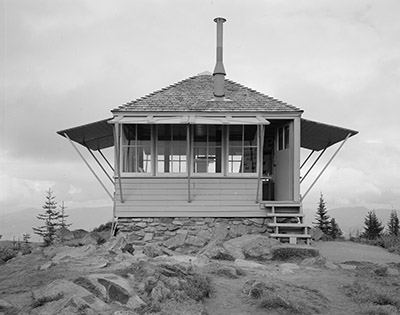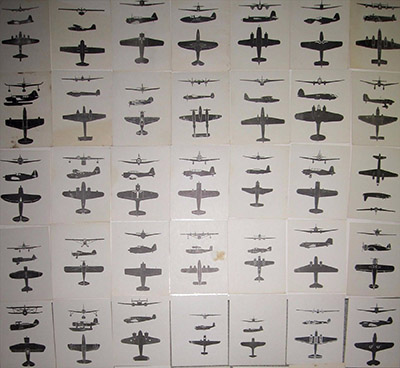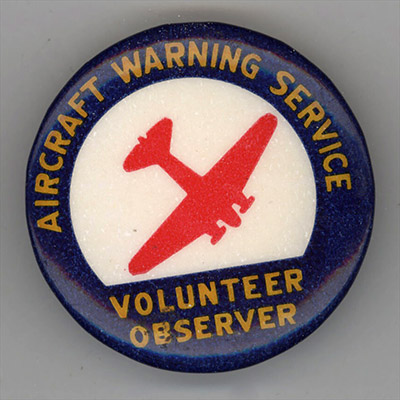OREGON COAST, 1940s:
AWS spotted few enemies, but saved many friends
Podcast version: Download MP3 or use controls below:
|

Not that it was all grim determination and studious scanning of the horizon, of course. “Several instances have recently been called to our attention where observers have been ‘partying’ while on duty,” the Portland regional AWS bulletin noted in summer 1942. “The noise and distraction prevent the efficient operation of the post … It is very undesirable to have more than two people on a post at one time.” This admonition was probably unnecessary in 1942, when the wolf was still very much at the door. That was the year when, in early September, AWS volunteers in Curry County became the only watchers in the country to actually spot an enemy warplane (here's a link to that story). A tiny seaplane, launched from the Imperial Japanese submarine I-25, had come to the Brookings area to try to start a forest fire with a pair of 170-pound bombs. It was the only wartime air attack on the mainland United States in history, before or since. But by the following year, the thrill was gone for many of the AWS watchers. It was becoming increasingly clear that Japan was not going to win, and the U.S. Navy was keeping the little island country’s remaining aircraft carriers very busy far away in places like Midway and the Marshall Islands. No Japanese strike force would be coming, and with each passing day it seemed more and more clear that no AWS observer was going to see another Japanese airplane flying over Oregon soil. That knowledge was one thing on a fine sunny day, when a person might enjoy sitting out under the shade of a tree overlooking the sea, idly scanning the horizon for aircraft. It was quite another on a blustery November night, shivering in an unheated shed with the window open to listen for planes. Still, the real value of the AWS did not fade with the fortunes of the Imperial Japanese Navy. In fact, it grew. As America’s eyes on the ground, watching the sky and reporting every sighting with telephones and radios, the AWS became a lifesaver for dozens, perhaps hundreds, of distressed American aviators. Remember, this was before navigation aids like LORAN. Pilots generally had to rely on landmarks to guide themselves in flight. A pilot caught in sudden bad weather, or in one of the Central Oregon Coast’s notoriously fickle fog banks, could get hopelessly lost; and radio communication was of limited value if Ground Control didn’t know where the pilot was. However, if an AWS observer had spotted and reported the plane and its location and direction of flight earlier in the day, the tower staff could plot out its likely location on a map and tell the pilot exactly where to go to find a safe landing. Corvallis historian Bill McCash estimates that at least 100 American lives were saved in just this way. And then there were the more dramatic cases, in which an AWS observer saw an aircraft in obvious distress. In one particularly notable case, an AWS volunteer reported an American bomber ditching in the ocean off Seaside. The Navy got there in time to rescue one of the two surviving crew members (the other swam to shore). Rather like the Coast Guard “Sand Pounder” beach patrol, the AWS is not much remembered today when historians start talking about the Second World War. But like the beach patrol, its contribution was more significant than most people realize.
|
Background photo is an image of Highway 395 on the shores of Abert Lake, made by F.J.D. John in 2016.
Scroll sideways to move the article aside for a better view.
Looking for more?
On our Sortable Master Directory you can search by keywords, locations, or historical timeframes. Hover your mouse over the headlines to read the first few paragraphs (or a summary of the story) in a pop-up box.
... or ...

©2008-2017 by Finn J.D. John. Copyright assertion does not apply to assets that are in the public domain or are used by permission.


